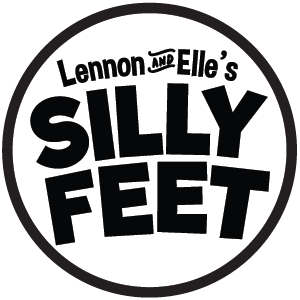
Tips for Buying Baby's First Shoes
Share

One of the most exciting moments for parents is watching their children take those very first steps. You can expect this new chapter to start at some point between nine and eighteen months. Be sure to enjoy baby's first steps, take plenty of videos and pictures but also remember to protect those little feet, and that means buying baby's first shoes.
Pick the Right Material
When it comes to buying your girl or boys first pair of shoes you'll need to ensure that your chosen material is breathable to avoid stinky feet. There isn't much worse than going down to nibble on your little angel's toes and catching a face full of stink.
You'll want to avoid synthetic materials for baby's first shoes. Leather is the best material available but light cloth can work well too. If you've already bought the wrong material and you're experiencing feel that reek Silly Feet can help you out with our bubblegum-scented deodorizing powder or the liquid foot deodorizing spray.

Slippage Concerns
Whether you're buying pre-walkers or real shoes, you'll want to make sure that they have a good grip. For pre-walkers it might be something simple like a series of rubber dots on the bottom of the sole. When it comes to real shoes there is almost no end to the variety of textures and designs. If the sole isn't completely flat then it will provide some sort of grip.
You might need more or less of a textured sole depending on where your baby is going to do most of their walking. When your toddler is just cruising around the house almost anything at all will do, but if you're going outdoors something more substantial will probably be needed.
Support The Arches
When your kiddo is first learning to walk you might want to get them a pair of pre-walkers. These don't offer much support and usually have a cloth sole, generally these are just to provide a bit of protection when your children are learning to walk. It's very easy for kids who don't have control of their feet to skin their toes.
Once your baby is graduating to an official toddler, you will need to buy that first pair of baby's real shoes. It's important to have a rubberized sole that can support without pushing or squeezing those tiny feet. If the shoe lacks support there can be serious long term consequences for the development of proper arches.
The easiest way to gauge the sole of a shoe is to simply pick it up and give it a bend. Very little resistance means that the sole is too soft, but if it's hard to bend then you'll probably want to find something a bit softer.

Proper Sizing Is Crucial
It's fairly obvious if baby's first shoe is too small. You'll have a hard time getting them all the way on. Equally important is not to get shoes that are too big. Large shoes can end up doing damage to your kiddo's feet. They might rub the wrong spots and cause abrasions. It can be hard to tell when a shoe is oversized. So how do you know if baby's first shoe is too big?
The easiest way to tell is to watch whether or not your toddler's heel is slipping out. If it seems to be sitting properly the next step is to feel the foot while it is inside the shoe. Feel the widest part of the foot and check whether or not the shoe is pressing against it. There should be a small amount of give, if it feels like there is pressure then you'll need baby's first shoe to be a bit wider.
The toes are also an important thing to check. It's very easy to tell how far away from the end of the shoe a child's toes are. Simply feel around from the tip of the shoe downward until you find the toes. They don't need to sit directly at the end of the shoe, but if they're more than a couple inches away then those shoes are definitely too big.
While an oversized shoe might not directly cause any long-term medical consequences, it might result in a lot more trips and falls. Some people will buy shoes that are too large in order to avoid buying multiple pairs for growing feet, but that isn't fair to your child.

Laces or Velcro?
The eternal question, should baby's first shoes be secured with laces or Velcro? Each one has its advantages. You're probably going to be the one getting the shoes on and off, so consider the fact that Velcro is quick and easy. Shoelaces are what I'd recommend personally. They look better than Velcro and the earlier kiddos are able to learn how to tie their shoes the better. Did you know that the age which kids first learn to tie their shoes is on the rise? The average age is now 6 years old. I figure the earlier they can get some practice in the better!
Buying Baby's First Shoe Conclusion
As they say... If the shoe fits, wear it. There isn't a ton of instruction needed for baby's first shoes, apart from making sure that the fit isn't too small or too large. Shopping for shoes is a lot of fun, and even more so when it comes to shopping for your kids. There are fun designs and characters that you just don't find when browsing through adult styles. Get as creative as you like, your child probably won't have much to say regarding their style until a year or two later.
